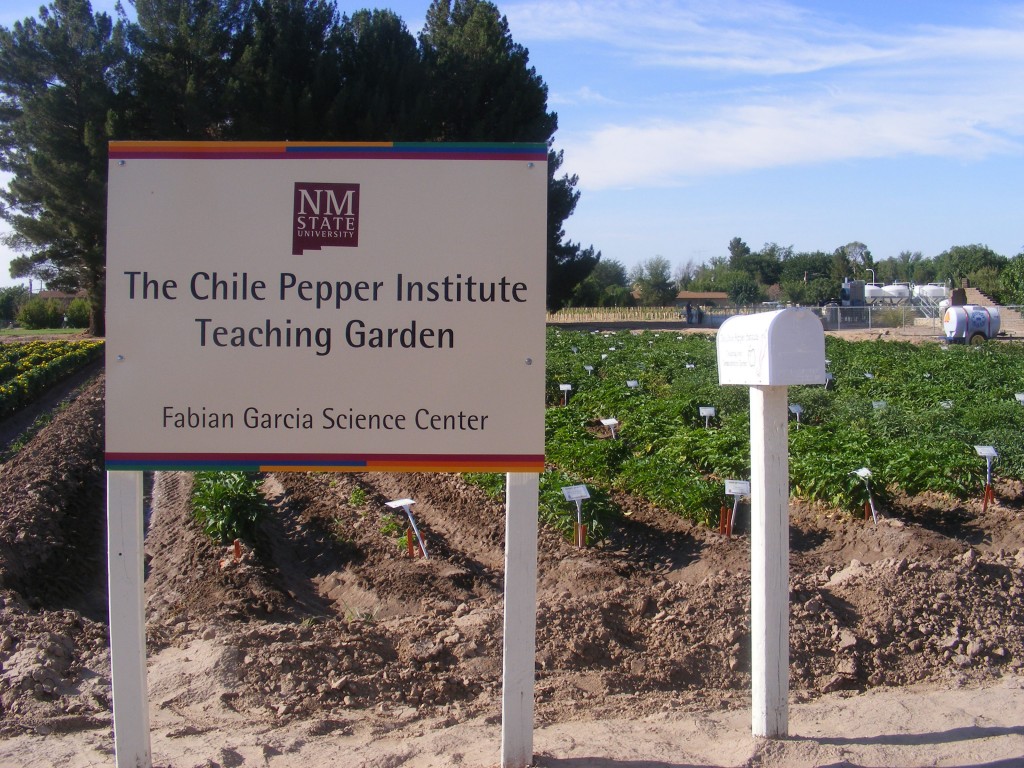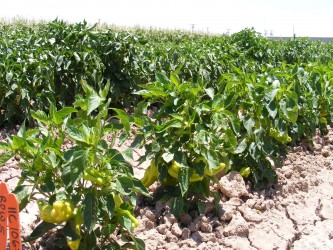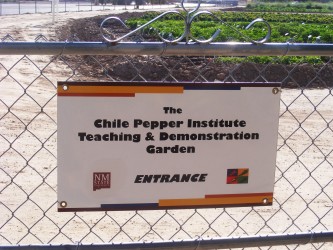The Chile Pepper Institute Amy Goldman-Fowler Teaching Garden
Visiting the Teaching Garden
To reach the Chile Pepper Institute Teaching Garden, take the University Ave. exit from either Interstate (I-10 or I-25). Follow University Ave. west towards the town of Mesilla. The Garden is approximately one block after you cross the railroad tracks, on your left at 113 W. University Ave. Drive into the Fabian Garcia Landscape Garden and park. Go through the gate in a chain-link fence to the east. Follow the signage to the garden gate.
The teaching garden is only open during chile growing season: July - October
- Aji Limon recipe
- Aji Omnicolor recipe
- Ancho recipe
- Bhut Jolokia recipe
- Chile de Arbol recipe
- Fresno recipe
- Keystone Giant Sweet recipe
- Mulato recipe
- NuMex CaJohns Serrano recipe
- NuMex Jalamundo recipe
- NuMex Joe E Parker recipe
- NuMex Suave Red-Orange recipe
- Orange Habanero recipe
- Pasilla recipe
- Shishito recipe
- Yatsufusa recipe
Visitors Welcome
The Chile Pepper Institute Teaching Garden has been an integral part of the Institute’s teaching program for over fifteen years. Students, families, and tourists visit and tour our garden each year. The garden has over 150 different varieties of chile peppers, including all the main species of Capsicum (C. annuum, C. baccatum, C. chinense, and C. frutescens), from the mildest bell to the hottest habanero.
In addition, the garden reveals many of the different diseases, disorders, pests, and problems encountered by chile growers. The garden presents an outstanding display of pod shapes, sizes, and colors. We hope you enjoy each year’s selection.
Garden Research
Working hand-in-hand with the New Mexico State University (NMSU) Chile Breeding and Genetics Program, the Institute educates the world about varieties developed and released at NMSU. Every year, the garden showcases all the varieties developed at NMSU, including “NuMex Big Jim,“ “NuMex Joe E. Parker,“ and “NuMex Piñata.“ The selection grown in the garden varies from year to year, but always showcases endless varieties. The garden is transplanted in early May, and visitors may start enjoying the garden in early June. It is open through the fall months, into November. The best time to see the garden is late July through late September.
- Bacterial Leaf Spot (Plant Pathogen)
- Beet Curly Top Virus (Plant Pathogen)
- Blossom-end Rot (Plant Pathogen)
- Powdery Mildew (Plant Pathogen)
- Sunburn-sunscald (Plant Pathogen)
Tours
Visitors are welcome to visit the garden on their own. Self-guided maps are free and are available in a mailbox at the front of the garden.
For a guided tour, please call with at least 48 hours notice and make reservations by calling 575-646-3028.
Guided tours highlight facts about the history, production, uses, and nutritional value of chile peppers. Guided tours usually last about one hour and are free to school classes, FFA, 4-H, and other youth groups. Tours are best scheduled in the mornings during the summer months.
Cost
TeachingGarden4 $25/person for groups of five or less.
$20/person for groups of six to twenty.
For groups larger than twenty, call for rates at 575-646-3028.
Tour fees go toward supporting the Chile Pepper Institute’s effort to establish a permanent endowment and build a new facility.
Questions? Please contact the Chile Pepper Institute at (575) 646-3028 or email us at cpi@nmsu.edu.

| Garden Hours |
|
7 days a week
Sunrise - Sunset
Guided tours available on M-F only.
|


